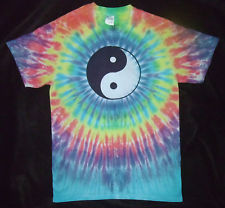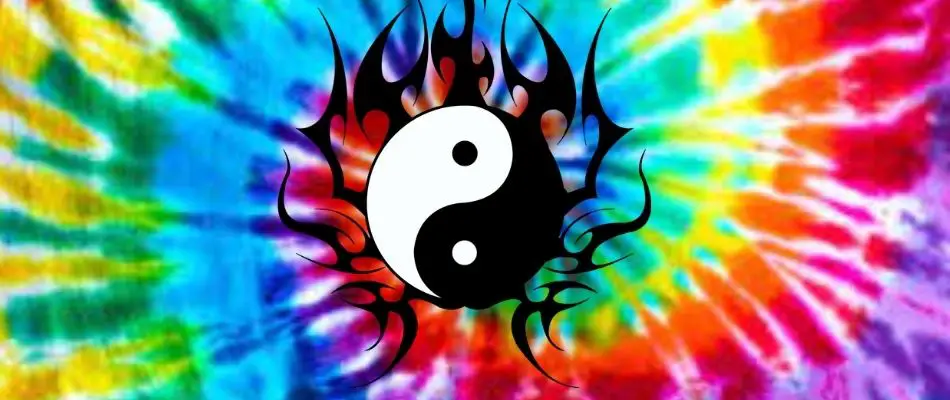You have seen him. The tie-dyed-shirt wearing gentleman with the fanny pouch at the last conference. Or the woman ordained with endlessly flowing scarves on a 100 degree day. At a conference I attended in Austin, Texas an attendee relaxed between sessions by playing a didgeridoo. At a summer camp I participated in in Oregon, an attendee entertained Grand Master Chen Zhenglei and his wife with juggling and hacky sacks.
These are our peeps. As eccentric as they are, they make up a representational and interesting percentage of practitioners. I wouldn’t dream of practicing an art that wasn’t as accepting as tai chi and find dullness a far more unacceptable sin. However, this laissez-faire reputation of tai chi can slow down the progress of new students.
Here are the risks:
Chi is a real, scientifically measurable energy that can have quick, dramatic implications for your wellbeing.
If you stray too far down the metaphysical path you can begin to see chi as supernatural or theoretical and unobtainable by “mere mortals.”
Posture and a sense of fullness are what gets the energy flowing through your body and ultimately gives you the sensation and control of moving chi.
Flowing muse-like dancing does not give you the proper structure and open blood flow. Yes, tai chi is beautiful, but understand that there is real substance to the movements. It is a fullness where your entire body is engaged. By doing the form correctly you are giving your body a 1-8 minute window where you are aligned and your meridians are open. Eventually an internal sensitivity arises that lets you “feel” chi.
Martial applications put your body in the proper position to ensure meridian alignment.

Tai chi is both martial and health. When asked which was more important, Chen Youze replied by saying: “Go after health and get the health. Go after martial and get the martial and the health.” You do not need to fight. However, the mechanics, posture, and intent of pushhands is how the proper alignment of taichi has been successfully passed down across millennia.
So where did the tie-dyed tai-chi stereotype come from?
Tai chi has equal parts martial, health, spirit, and history. One could spend a lifetime studying different aspects of the art and not scratch the surface. So how did the spiritual aspects of taichi get over emphasized? Let’s take a quick historical look at the popularity of martial arts in America.
History

Most Americans who initially undertook martial arts practice largely fell into two camps. They served in a war in Asia and were exposed to the martial aspects of an art. Or, they were introduced to tai chi through the hippie movement of the 1960s.
U.S. veterans were taught martial arts as part of their wartime training. Pilots were taught Judo in Japan. Marines were taught Karate in Okinawa and stick fighting in the Philippines. Solders continue to bring back Tai Kwon Do from Korea. As you can imagine, while I am making an argument for exploring the practical and martial aspects of tai chi, practitioners of the external martial arts are revisiting the soft side of their disciplines.
Tai chi arrived in America at a time when American’s were ready to think with a more open mind – i.e. the 1960s. Most Chinese immigrants to America came from Beijing or Hong Kong which have a large concentration of Yang tai chi practitioners. This was perfect timing as Yang Style has a greater focus on the health and metaphysical.
Politics
We have had standing relationships with Japan, Korea, and the Philippines for the last half century. These have been the countries that have provided us with what we traditionally consider the hard, external martial arts. Basically, many Americans served in these countries learned martial arts there, and brought them back to the U.S. Based on their own exposure and interest, the martial application of these arts became the focus and internal aspects took a back seat.
Conversely, China began opening its doors in the 80s. While this was already 30 years ago, their marital arts were more closely linked to religion and China kept a tight leash on information sharing. It was not until the last decade that we have seen more travel visas for teachers, more travel visas awarded to Americans, and the Chinese discovery of YouTube.
Tie-dyed Tai Chi
Love tai chi for its global peaceful message. However, understand that the spiritual aspects of tai chi are just a portion of the art. If you crave the spiritual-metaphysical energy that chi promises, know that it is dependent on you being healthy, aligned, and balanced. If you crave the power of internal strength easily demonstrated by dozens of Chinese teachers, know that they got there by pursuing relaxation and balance.
And please, please totally rock the tie-dye if you can pull it off. Tons of great options online. And here are some clothes ideas for class if you are a bit more conservative :).



Touche